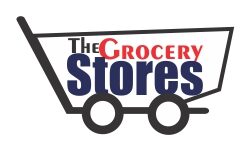Despite the fact that everyone prefers foods with the deepest hues, white fruits and vegetables are incredibly healthy.
According to extensive research and observation, many people do not find these white fruits or vegetables appetizing or attractive.
However, if you want to start the healthy journey with white fruits and vegetables, let’s study some of their names, uses, health benefits, and where you can get them.
Some common white fruits include:
1. Musa acuminaia (banana):
Among the most consumed fruits worldwide, bananas are accessible, affordable, and delicious. Bananas, which originated in Southeast Asia, are now farmed all over the world and come in a variety of colors, shapes, and sizes. The most popular variant is a yellow banana that is green when unripe. It is a flowering fruit from the genus of Musa.
However, the health advantages of the fruit vary depending on its level of development. Therefore, if you believe you bought a banana that was overripe or unripe , reconsider before exchanging it for another!
There are several benefits to eating all types of this fruit on a daily basis, including cardiovascular health, weight maintenance, skin care, and digestive support. You can get bananas in any of your local grocery stores, such as Walmart or Aldi.
2. Bosc Pears (Pyrus Communis):
The Bosc pear stands a head higher than other pears thanks to its enhanced thin neck. Bosc pears can have yellow or green tints and have a leathery texture.
Scrumptious, crunchy, and solid describe the pear’s white flesh. Bosc pears are a great choice if they are required for boiling in a recipe. This is because they maintain their shape and don’t become pulpy when cooked. For baking and eating fresh, they work best.
Pears are one of the few fruits that do not fully grow while on the tree, with the exception of Asian pears. Therefore, any pear you purchase will almost definitely require some time to fully mature.
They include large amounts of copper, potassium, fiber, vitamin K, and vitamin C. They might help improve digestion and lower the chance of a stroke. You can purchase Bosc pear from any local fruit store, Walmart, or Instacart.
3. Coconut (Cocos Nucifera):
A coconut, scientifically known as Cocos Nucifera, is a fruit that develops on the palm tree and is also referred to as a dry drupe. It is one of the most significant tropical fruits and has Indo-Malayan origins. It is a spherical fruit with a tough outer, brown, hairy shell covering its white, fibrous, greasy flesh. They have a fibrous kernel to protect them.
Therefore, fruit that is still delicate emits water that is used as a basic food source in many cultures.
Some uses of coconut include:
- To make coconut oil for skin
- Remove makeup
- Hair Growth and Prevention of Scalp Injuries
- Cure skin tanning.
Health benefits include:
- Prevents diabetes
- Assist in stress control.
- aids white blood cells in their fight against certain bacteria.
- Cytokinins in coconut slow aging.
- It decreases abdominal fat.
Important electrolytes found in coconut water aid in keeping the body hydrated. People who engage in rigorous activities such as easy workouts should drink as much coconut water as they can. Coconut water hydrates, replenishes depleted electrolytes, and boosts the immune system. It is a superior option to water since it tastes better and is packed with nutrients. You can get fresh coconut from Instacart, Walmart, and Amazon.
4. Dates (Phoenix Dactylifera):
Indeed, dates are a type of palm fruit. Almost all dates are left to dry in Western countries. Depending on the type, mature dates come in a variety of sizes and hues, from dark brown to vivid yellowish. And the flesh is a sweet white tone. They have more calories than many other fresh fruits when they are dried. Dates and some other dried fruits, such as figs and raisins, have nearly identical nutritional profiles.
Uses and health benefits of dates:
- It is used as a natural sweetener in bakeries
- Fiber in dates promotes the breakdown of food and healthy bowel movements.
- Dates include a variety of antioxidants that could aid in the prevention of some chronic diseases like diabetes and Alzheimer’s.
- Dates may be beneficial for reducing inflammation and avoiding plaque formation in the arteries.
- If eaten in the final several days of pregnancy, dates can help pregnant women have a natural birth and can also speed up the process.
Dates can be prepared in numerous ways. Although they can be added to other well-known recipes, they are typically eaten plain. Dates can be gotten from Amazon, whole food markets, or any other local fruit store.
5. Prunus persica (white peaches):
Depending on the kind, white peaches typically have a medium size and a round or oval shape. The exterior of the fruit is semi-thin, mildly bruised, and colored with an ivory-based base color, a protective layer of silky suppleness, and a coating of pinkish hue.
The flesh is delicate, squishy, and watery underneath, surrounding a center, light brown hole that could actually be a freestone that can be easily detached from the flesh. Red areas encircle the pits or are located just below the skin, and the flesh is likewise white. Low aci The low sugar content in the flesh adds to the flavor’s medium sweetness and light scent.
Some uses and health benefits include:
- Vitamin C in white peaches helps heal fast.
- It contains Vitamin A that improves the eyes and immune system.
- Rich in fibre. This helps your digestive system and protects you from illnesses like diabetes and heart complications.
The fluoride used in toothpaste is also found in peaches. Now imagine how your teeth would appreciate this. Not just that, it also keeps your bones healthy and prevents you from having kidney stones. You can get white peaches at Georgia Peach World or any preferred local fruit or grocery store.
Common white vegetables include:
1. Cauliflower (Brassica oleracea var. italica):
Researchers studying cancer treatment have found a new treasure. The name is cauliflower flower. Typical research shows that almost 80 percent of cervical cancer cells are destroyed by this particular element in just 48 hours.
Cauliflower is mostly found in salads. You can simply cut the florets or roast the head of the cauliflower or cook it in soups.
Its uses and health benefits include:
- Its components may support cardiovascular health, bone health, and cancer prevention.
- Cauliflower has a lot of water and fiber. Both are crucial for avoiding constipation, preserving digestive tract health, and reducing the risk of cancer.
Either fresh or frozen cauliflower is convenient. Bright green leaves that are firmly linked to the stem and a robust head free of any dark stains are characteristics of fresh cauliflower. For a maximum of five days, keep it in the fridge in a ziploc bag. Cauliflower is available at Walmart supercenters, Amazon, and Whole Foods Market.
2.Garlic (Allium sativum):
Also rich in excellent antioxidants, garlic has been said to help treat or prevent colds. This white vegetable has been linked to increased resistance, lowered blood pressure, reduced inflammation, and a decreased risk of heart disease.
Additionally, some individuals even believe that garlic can aid in weight loss. In spite of maintaining a constant diet, mice that were fed garlic lost weight, according to a Korean study.
A magnificent white vegetable with a wonderful flavor, garlic is unquestionably one of the things you ought to eat. The family of vegetables which includes both garlic and onions belongs to the genus Allium.
Garlic has arginine, flavonoids, selenium, and oligosaccharides, all of which have potential health advantages. Garlic has also been discovered to assist in reducing the risk of cancer. A higher garlic intake has been linked to a lower risk of pancreatic, esophagus, breast, and stomach tumors.
3.Mushrooms (Agaricus bisporus):
It’s common to consider mushrooms to be merely a garnish or an afterthought. These white fungi can also be healthy, though. They are good suppliers of minerals and vitamins like potassium, copper, ergothioneine, selenium, B vitamins, and selenium.
They also include vitamin D, which is quite uncommon in both fruits and vegetables. Mushrooms aid in boosting the white blood cells that protect the immune system. This is because of the high antioxidants they have.
They also help you manage your weight and minimize the risk of having stomach cancer. You can get your mushrooms from Walmart, Whole Food Market, or any store or open market.
4.Potatoes (Solanum tuberosum):
When prepared in the right way, potatoes are very nutritious. However, it has a bad reputation because of its starchiness. This is why so many people stay away from it.
Nevertheless, the potassium in potatoes strengthens your bones, reduces the risk of stroke and heart ailments, and also helps fight kidney stones. In the United States, potatoes can be purchased from Whole Food Market, Potatoes USA, Red Potato Market, and your regular grocery store or other open market.
Even though they lack the chlorophyll, carotenoid, betalains, and flavonoids that give other blue, purple, and red fruits and vegetables their vibrant colors and tangy flavor notes, white fruits and vegetables are just as healthy and worth incorporating into your diet.

